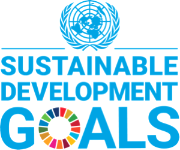Foster Climate Smart, Resilient, and Regenerative Food Systems
Support efforts that improve agriculture’s effect on the environment, encourage wise stewardship of water and natural resources, eliminate waste and are regenerative, e.g., practices that enhance ecosystems and improve the land.
Poverty
Hunger
Equality
Action
Motivation
As interest in "regenerative agriculture" continues to grow, we are seeing the introduction and evolution of the term in California policies and programs. From references in legislation, to a funding focus in government programs as well as policies promoting local food systems – the term "regenerative agriculture" is now widely used in California.
The California State Board of Food and Agriculture, as advisory body to the Governor and CDFA's Secretary, is positioned to advise on how the State's farmers, ranchers and consumers may be best served by agricultural policies in the state. Incorporating a definition of regenerative agriculture for state policies and programs provides a science-based criterion for the designation or recognition of the term "regenerative" in agriculture-related policies of the state. By defining "regenerative agriculture" and its associated practices, we are working to formalize holistic methods of farming that are designed to protect, sustain and enhance natural resources on our farms and farming communities throughout California.
Approach
Understanding the diversity of opinions, the evolving marketplace and the priority of equity and inclusion, the State Board is focusing on inclusive public process which places the importance of public input front and center, while providing transparency and engagement opportunities for stakeholders. A definition of regenerative agriculture for California needs to capture the diversity of production, the uniqueness of localities and the innovation of the State’s farmers and ranchers while providing a science-based foundation.
Timeline
Several components make up the timeline for the regenerative agriculture process.
- Environmental Farming Act, Science Advisory Panel (Completed 2023)
- Listening Sessions (Sessions begin Nov/Dec 2023)
- Listening Session #1 – Wednesday, December 6 – Noon (Recording)
- Listening Session #2 – Thursday, January 11, 2024 – 4:30 p.m. (Recording)
- Listening Session #3 – Thursday, February 22, 2024 – 4:30 p.m. (Recording)
- Listening Session #4 – Wednesday, May 29, 2024 – 4:30 p.m. (Registration Link)
- Listening Session #5 – To be scheduled
-
Tribal Listening Sessions
These listening sessions are intended to receive comment from California Native American Tribes. These listening sessions are accompanying a formal Request for Consultation made March 28, 2024. If this is of interest to your Tribe or if you would like more information, please contact Virginia.Jameson@cdfa.ca.gov or RegenerativeAg@cdfa.ca.gov.- Tribal Listening Session #1 - Tuesday, April 16, 2024 – 9:00 a.m.
- Tribal Listening Session #2 - Monday, April 29, 2024 – 5:00 p.m.
- Regenerative Agriculture Work Group (Begins Jan/Feb 2024)
- Work Group Session #1 - Wednesday, January 31 - 12:30 p.m. (Recording)
- Work Group Session #2 - TBD
- Work Group Session #3 - TBD
- CA State Board of Food and Agriculture – Final Recommendation (June/July 2024)
Public Comment
Written Public Comments on the Defining “Regenerative Agriculture” for state policies and programs can be submitted to:
RegenerativeAg@cdfa.ca.gov
Work Group
CDFA will announce and appoint individuals to a Regenerative Agriculture Work Group in Nov/Dec 2023. The Work Group will consider received public input (listening sessions) and the EFA SPA framework recommendations. Through a series of facilitated meetings, the Work Group will draft a recommendation for a definition of regenerative agriculture to submit to the State Board for consideration. The Work Group will represent a diversity of agricultural stakeholders, State Board and EFA SPA Members.
What is “Regenerative”?
While the term “regenerative” is relatively new, the principles behind the concept reflect practices that some farmers and Native American Tribes have embraced for generations. Even so, the “regenerative” terminology is gaining traction and support like never before due in part to the belief that “regenerative” moves beyond the philosophies of “do no harm” and sustain what currently exists to one of making things better. While there is no universal definition of “regenerative agriculture,” many believe regenerative approaches include those that help mitigate climate change, improve soil health, restore biodiversity, enhance ecosystems, and contribute to human health.
EFA SAP Recommended Framework: (EFA SAP Letter to the Board )
- Being applicable, relevant, and useful for California Agriculture.
- Leading to positive impacts on California’s environmental, social, human health, and economic goals, including climate goals.
- Providing measurable and verifiable outcomes, keeping in mind variability throughout the state, and – emphasizing outcomes farmers and ranchers can easily measure and that are not economically burdensome to measure.
- Allowing for context specific outcomes (in terms of scale, geographic location, diverse and/or innovative agricultural systems, goals, etc.)
- Include the idea that building soil health, including elements of physical quality, carbon sequestered, soil biodiversity, and alleviation of climate change (e.g., practices funded by the CDFA Healthy Soils Program) as a foundational element.


